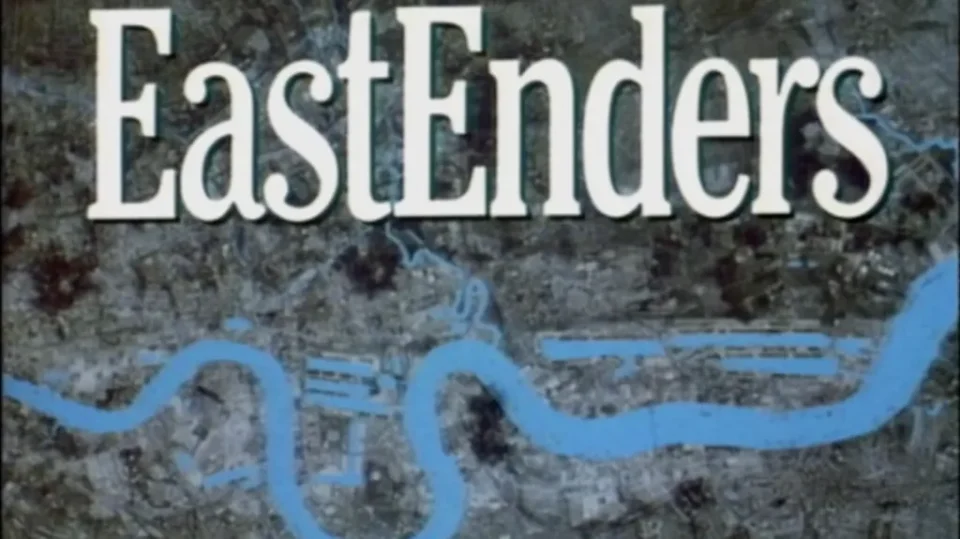From its inaugural episode on February 19, 1985, EastEnders introduced us to its iconic opening sequence—pulling back from the River Thames to showcase the East End, including the London docks and the Isle of Dogs.
At that time, the area lacked City Airport, the towering office buildings of the City of London, and the recognizable spires of Canary Wharf.
Over the past four decades, the East End’s landscape has undergone significant transformation, bringing about changes in its demographic fabric as well.
Factors such as migration, industrial shifts, and the policies of Margaret Thatcher have all contributed to the redefinition of this traditional cockney territory. Nevertheless, can remnants of that distinctive East End character still be discerned?
Chris Ross, affectionately known as the East End Poet, shares a coffee with me while reminiscing about his childhood in Mile End. He recalls sneaking into the cinema, playing among bomb sites, and the people who were part of his early life. Yet, he refrains from idealizing those times.
“People frequently lament, ‘Oh, I miss the old East End.’ But what exactly do you miss? The outdoor toilets? The rusty tin bath that was dragged in front of the fire every Friday night for a family bath? Is that truly what you long for? No, it’s not that. It’s youth you miss; we all yearn for that.”
Chris reflects on how Thatcher’s 1980 Right to Buy initiative transformed East End neighborhoods.
“In the 1980s, when Mrs. Thatcher allowed people to purchase their council homes—only for them to resell at a profit and relocate to the countryside a couple of years later—it profoundly affected the East End, to be candid.”
“They moved to places like Clacton or even the Costa del Sol with their council house earnings,” he laughs.
Although he currently resides further east, Chris notes that some aspects of his former neighborhood endure.
“I still stroll down Roman Road and encounter familiar faces from my past or their children. So, there’s definitely something there. An essence of the East End persists.”
At the Cannon Workshops, nestled beneath the towering structures of Canary Wharf, Reginald Beer displays his collection of vintage maps. The East End is depicted on an 18th-century map—represented as the easternmost part of the City of London. Islington appears as a refined suburb located further away, and there’s minimal development south of the River Thames.
A 1951 map is more recognizable. It features color-coded areas, with yellow indicating derelict sites—primarily remnants of World War II bomb damage—spanning large portions of the East End near the docks.
The 1950s marked a shift as severe overcrowding and housing shortages began to be addressed, leading to notorious slum clearances. Many residents relocated to newly built council housing in areas like the Isle of Dogs.
Reg recounts, “This was the era when tower blocks emerged. We once lived in a house overlooking a canal, but from there we transitioned to a prefab, given little choice since the area was being demolished. Eventually, we moved into a tower block.”
This transition was tough on his mother, who longed for her garden and the camaraderie of neighbors.
As a local councillor for Tower Hamlets, Reg engaged in urban regeneration efforts. “Looking back, our initiatives primarily focused on constructing numerous council homes without corresponding job creation.”
Historically, London’s docks were a major source of employment in the eastern part of the city. However, the last cargo was unloaded at the Royal Docks in 1981, marking the end of a lifestyle that had characterized families for generations.
Ronald Webb, the last surviving union representative from the National Amalgamated Stevedores and Dockers, often referred to as the “Blue Union,” experienced the profound ripple effects of job loss firsthand.
“When that happened, it’s important to remember that the East End consisted of tightly-knit family communities. Walk down any given street, and chances were that half of the residents were relatives. When the docks closed, many were relocated, disrupting those familial ties that had defined their lives.”
In the present landscape, grand buildings and substantial financial investments have replaced the ships and active docks. Today, the disparity between the earnings of workers and residents in this area is the widest in the UK.


